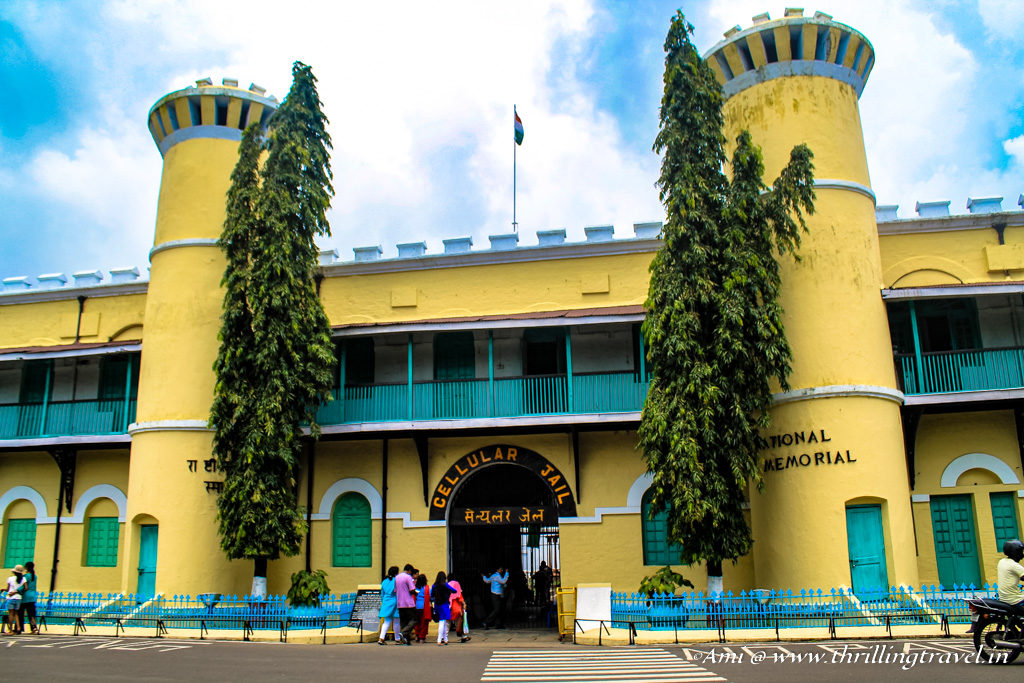The Cellular Jail was a colonial prison in the Andaman and Nicobar Islands, India. The prison was used by the British especially to exile political prisoners and revolutionaries to the remote archipelago. The construction of the prison started in 1896 and was completed in 1906. The building had seven wings which was subsequently damaged and presently three out of the seven prongs are intact. At the centre of the building a tower served as the intersection and was used by guards to keep watch on the inmates. The wings radiated from the tower in straight lines, much like the spokes of a bicycle wheel. A large bell was kept in the tower to raise an alarm. Each of the seven wings had three stories upon completion. There were no dormitories and a total of 693 cells. Each cell was 4.5 by 2.7 metres (14.8 ft x 8.9 ft) in size with a ventilator located at a height of 3 metres (9.8 ft). The spokes were so designed such that the face of a cell in a spoke saw the back of cells in another spoke. This way, communication between prisoners was impossible. They were all in solitary confinement. Some famous inmates of the Cellular Jail were Diwan Singh Kalepani, Fazl-e-Haq Khairabadi, Yogendra Shukla, Batukeshwar Dutt, Maulana Ahmadullah, Movli Abdul Rahim Sadiqpuri, Maulvi Liaquat Ali, Babarao Savarkar, Vinayak Damodar Savarkar, Bhai Parmanand, Shadan Chandra Chatterjee, Sohan Singh, Vaman Rao Joshi and Nand Gopal. After independence, Cellular Jail was converted into a National Memorial in 1969 in which the entrance block houses Freedom Fighters Photos and Exhibition Gallery in the ground floor. The first floor of the building has an Art Gallery, Netaji Gallery and a Library on freedom movement. A gallery on First War of Independence and another gallery with rare collection of old photographs has also been set up in the premises. Added attraction in the National Memorial is the programme of Sound and Light Show (Son-et-Lumiere).



